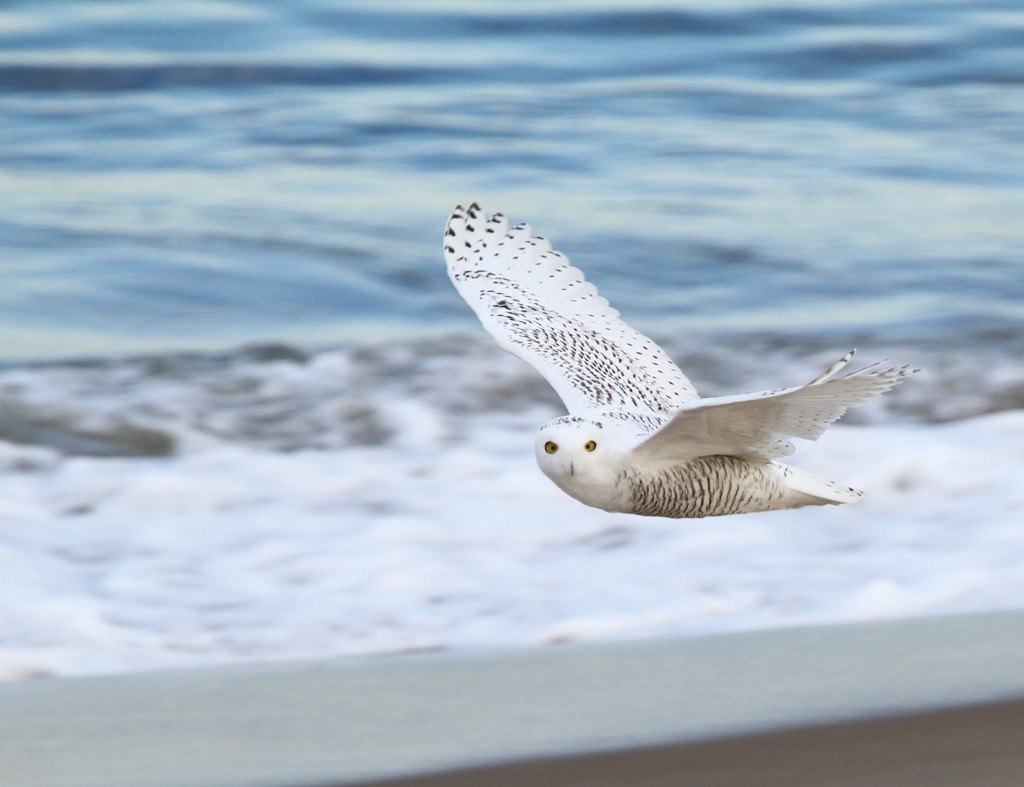Currently
New England is hosting a major incursion of snowy owls, many of which will
likely spend the winter in our area.
 |
| Photo © Dave Larson |
Typically these Arctic visitors tend to
appear most frequently near the coast, but the first report this year was
inland at Mount Wachusett in Princeton on November 17. Since then, snowy owls
have been showing up all over Massachusetts. See a map of recent sightings on eBird.
Why So Many Snowy Owls?
The snowy owl is considered an “irruptive” species—one that
responds to changes in the conditions on its home territory by moving elsewhere
in search of food. Some of the factors that may trigger these irruptions
include variations in food supply in the Arctic, severe snow and ice cover in
their usual wintering areas, or a superabundance of owls resulting from an
exceptional nesting season prior to a southward irruption.
For many years it was assumed that snowy owl irruptions only
occurred in years when the lemmings that comprise the snowy owls’ primary food
in the Arctic were in short supply, thus forcing the starving owls to move
south in search of food.
However, Norman Smith, sanctuary director
of Blue Hills Trailside Museum and lead of Mass Audubon’s Snowy Owl Project says “We actually see the most snowy
owls in New England after an Arctic lemming population boom, not bust.” High
lemming populations improve breeding success, and irruptions typically consist
mostly of hatch-year birds (ones born this year).
Where to See Snowy Owls
Snowy owls arriving in Massachusetts tend to seek local habitats
that mimic the Arctic tundra where they spend most of their lives, such as
large salt marshes, extensive agricultural fields, and even airports. Popular
sightings include Westport, New Bedford, Nantucket, Orleans, Duxbury Beach,
and of course, Plum Island.
Accordingly, if you are passing a large open field this winter,
that white spot in the distance might only be an errant piece of plastic, but
it could also be a snowy owl!
Reposted from a Mass Audubon
blog, posted December 7, 2013 by Hillary. Text by Marj Rine, Photo ©
Dave Larson
This post is from the Neponset River Watershed Association’s
Neponset Nature Blog. The original post can be found at: http://www.neponset.org/happenings/neponset-nature-blog/snowy-owl-update/.
No comments:
Post a Comment